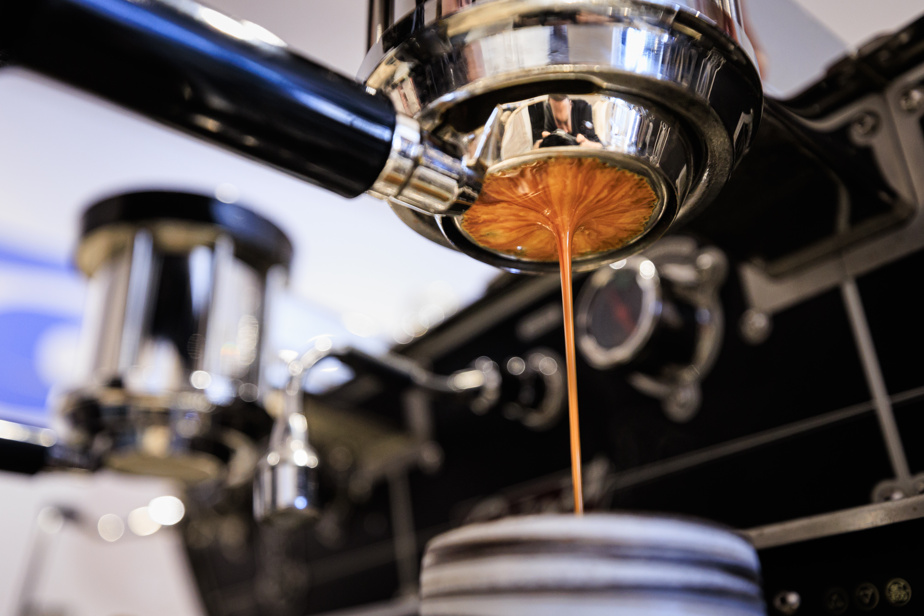With its fruity, comforting smell, smooth texture and full-bodied taste, few pleasures beat that of a perfectly brewed coffee. But you still need to know the right techniques. Experts give us some tips for a successful morning nectar every time.
To do
Buy a coffee with a roast date

PHOTO EDOUARD PLANTE-FRÉCHETTE, THE PRESS
It is best to buy a bag with a roasting date to know its freshness.
A week, a month, two months, the ideal drinking time is not the same for all coffees. But baristas agree on one thing: it’s better to buy a bag with a roasting date to know its freshness. “Coffee is not like a baguette,” says Dany Marquis, owner of Brûlerie du Quai, in Carleton-sur-Mer. We do not want to consume it the same day [de la torréfaction], but the fresher it is, the tastier it will be. »
This is because roasting creates gas in the coffee beans. It escapes through the valve placed on the bag. As one wishes to drink coffee rather than gas, it is recommended to wait a few days after roasting before consuming it. However, if you like cream, you should not expect too much either, because it is the gas that allows the formation of the famous creamy layer. Generally speaking, beans are best 7 to 30 days after roasting.
Grind your coffee

PHOTO EDOUARD PLANTE-FRÉCHETTE, THE PRESS
deTerroir Café, rue Saint-Jean, in Quebec
The first piece of advice given by foodie columnist Allison Van Rassel, who opened Terroir Café in Quebec City, is not to invest in a high-end espresso machine, but rather in a grinder.
Choose a grinder with a grinding wheel rather than blades. It provides uniformity in the grind. With blades, we will have larger grains, others smaller. The coffee will be over or under extracted.
Allison VanRassel
Since buying a grinder requires a considerable investment, most roasteries offer to grind it for you. The grind will then be perfect, but the freshness will be compromised. If you choose this option, it is better to grind small amounts at a time, which means going often. Baristas, however, recommend grinding as you go, never in advance.
have a recipe

PHOTO EDOUARD PLANTE-FRÉCHETTE, THE PRESS
The scale is a basic tool for preparing coffee.
“Coffee is liquid food,” says Allison Van Rassel. Do you cook without a recipe? To prepare her coffee, she suggests another basic tool: a scale. Of course, purists weigh the beans and the water for each cup, but “you don’t have to be zealous,” adds Dany Marquis. The important thing is to know the ideal proportions according to the method used.
The basic ratio of espresso is 1 to 2. If 18g of ground coffee is placed in the portafilter, the espresso should weigh 36g of water and coffee. “It’s tight,” however, warns the gourmet columnist. It is therefore necessary to adjust the weight or the extraction time according to your tastes. The American Coffee Specialists Association (SCAA) recommends the preparation of coffee with a filter with a ratio of 55 g of coffee for one liter of water.
Not to do
Store your coffee in the fridge

PHOTO EDOUARD PLANTE-FRÉCHETTE, THE PRESS
Foodie columnist Allison Van Rassel has opened deTerroir Café in Quebec City.
Perfumeries have known for a long time that coffee absorbs odors. If placed in the refrigerator, it will have the same effect as a box of baking soda. Farewell, good taste! For optimal conservation, it is advisable to keep the beans in an airtight dish, away from light and away from heat sources such as the oven. There are a ton of airtight coffee jars out there, but you don’t have to spend a fortune, points out Allison Van Rassel. An ordinary glass container does the job, provided it smells nothing.
Use distilled water

PHOTO EDOUARD PLANTE-FRÉCHETTE, THE PRESS
A good coffee latte
“Water is about 98% of a cup of coffee. If the water isn’t good, your coffee won’t be good,” says Dany Marquis straight away. To ensure quality, many enthusiasts buy bottled water. However, the expert advises against using distilled water. This does not contain minerals, hated because they accumulate in the machine and require premature cleaning. However, according to the SCAA, minerals are necessary to express the aromas of coffee. In the majority of cases, tap water is adequate.
Use a spice grinder

PHOTO EDOUARD PLANTE-FRÉCHETTE, THE PRESS
The coffee grinder is better than the spice grinder.
To grind coffee beans, it is tempting to use a spice grinder, discreet on the counter and inexpensive. It’s not a good idea. First, because its blades do not properly grind the beans. Then, because if the grinder has been used before for other spices, the flavors of the coffee will be ruined. Columnist Allison Van Rassel recommends putting coffee in a spice grinder for one purpose: making a spice “rub” to rub on meat.
Froth skimmed milk

PHOTO EDOUARD PLANTE-FRÉCHETTE, THE PRESS
Use whole milk for a firm, flavorful froth.
To froth milk perfectly, it must be fat. “We choose 3.25% or 3.8%, advises Dany Marquis. This allows for a texture that resembles that of melted ice cream. It is delicious ! This texture helps create the famous shapes on the cup. Before activating the steam on your espresso machine, it is better to keep the pitcher cool. This trick is the same as for whipping cream. The cold container accelerates the creation of the foam and thus avoids burning the milk with the steam. Allison Van Rassel adds that “fat is a flavor vehicle in the kitchen. If the coffee is of excellent quality, the result will be even more delicious”.
